9 Key Podcast Metrics You Should Track in 2025
Table of contents
Competition among podcasts is incredibly high. There are 6 MILLION podcast titles ONLY on Spotify. Are you wondering what determines the podcast’s success? There are a lot of different metrics to measure it. You need to know which ones matter, what they represent, and how to measure them. Here are 9 key podcast metrics you definitely should track. Keep reading!
Tracking podcast metrics is crucial for many reasons. It helps to understand the audience and improve the quality of the podcast. You can easily tailor your content to meet your audience’s expectations. But most importantly, tracking the right metrics provides valuable data that can attract sponsors and advertisers.
Key podcast metrics to track:
01 Number of listeners
The number of podcast listeners shows the audience size. It’s the most important metric! You may ask, why?
The more listeners a podcast has, the more attractive it is to potential sponsors or advertisers.
Imagine a brand wanting to appear on a TV show nobody watches. It doesn’t make sense! Creators have more earning potential when their podcast is listened to by many people.
The number of listeners can encourage people to check out your podcast. You can communicate this number on your social media!
How to measure?
This metric is provided by podcast-hosting platforms like Apple Podcasts for Creators.
Depending on the platform, this indicator may show:
- Roughly how big is your audience
- The exact number of unique listeners to a particular episode and the number of listeners to all episodes
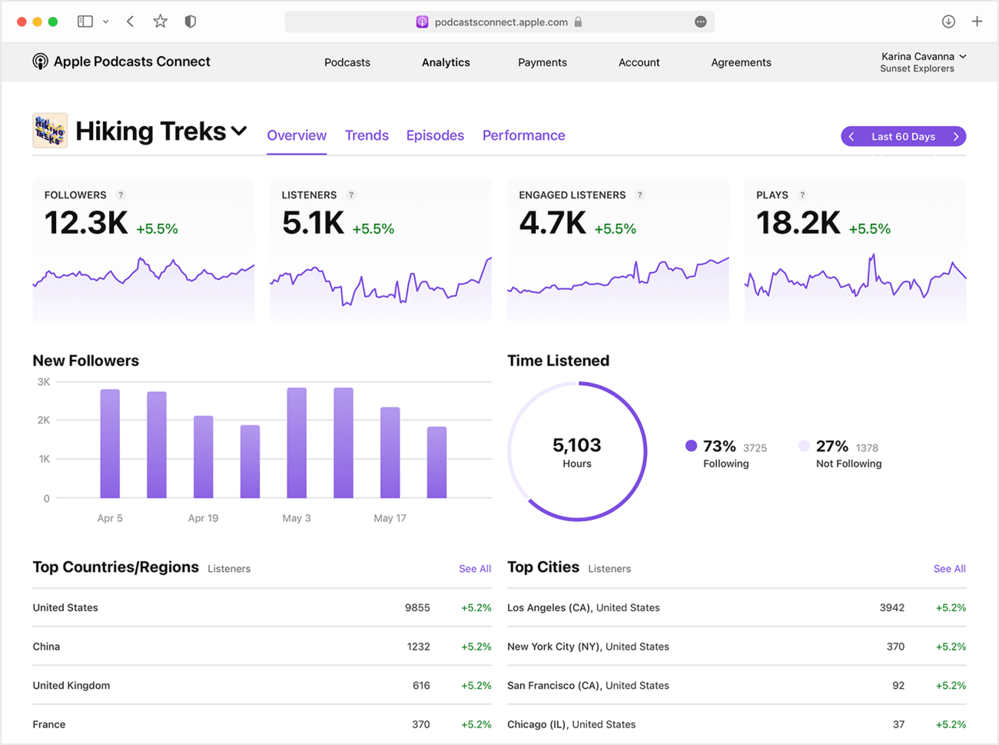
Track key podcast metrics!
02 The volume of mentions
The volume of mentions indicates that people talk about the podcast across various sources like sites, social media channels, etc.
By tracking this metric, you can control what the audience says about the podcasts and respond quickly if needed.
It’s good when your content is talked about! Thanks to it, your podcast awareness is increasing.
Mentions make you more likely to get new listeners!
41% of podcast listeners discover new podcasts through online sources (Adobe Digital Insights 2019: Podcast & Audiobook).
How to measure?
It would be hard for you to track mentions manually.
Fortunately, there are media monitoring tools such as Brand24 that collect all mentions (even untagged ones) in one place in real-time.
The sources that Brand24 monitors are not only social media platforms but also:
- News
- Blogs
- Forums and review sites
- Newsletters
- Podcasts
- And much more!
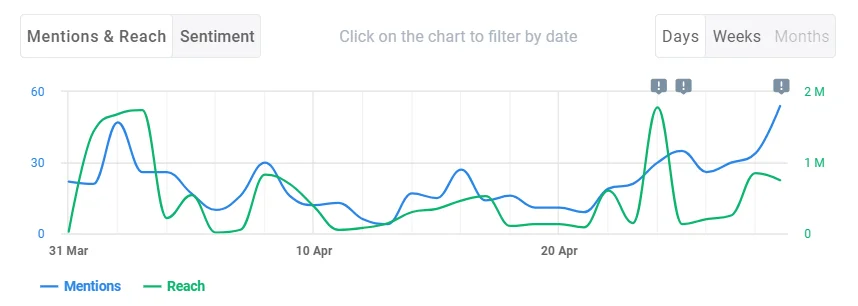
The spike in people mentioning your podcast may happen suddenly.
You don’t have to investigate on your own what caused the increase. Brand24 will do it for you!
It has an AI-powered feature – the Anomaly Detector, which briefly explains what happened.

Track the volume of mentions and other podcast metrics!
03 Average listening time
This metric shows the average time people spend listening to your podcast.
It helps determine how engaging an episode of your podcast is. Of course, the longer the average listening time, the better.
For example, in Apple Podcasts, a person who has listened to at least 20 minutes of an episode, or 40%, is counted as an engaged listener.
Observing it can help you frame the podcast strategy. You can start doing shorter episodes or, on the contrary, longer episodes containing more in-depth information.
As you notice that the current format of your podcast is not engaging, you may also decide to make bigger changes.
How to measure?
Similar to the number of listeners, this metric is available on podcast-hosting platforms.
Usually, this metric is calculated for a single episode, and then the average value is computed for all podcast episodes.
04 Sentiment
Sentiment is an excellent complement to the previously mentioned metric – volume of mentions.
This key metric shows how people feel about your podcast. They can be positive, negative, or neutral.
Thanks to sentiment analysis, you can:
- Gain insights that will help you improve your podcast
- React quickly to negative mentions and avoid crisis
- Monitor your podcast’s reputation in real-time
- Keep your audience happy and satisfied
How to measure?
You must use a third-party tool like Brand24 to measure sentiment.
All collected mentions are categorized and presented as a line chart.
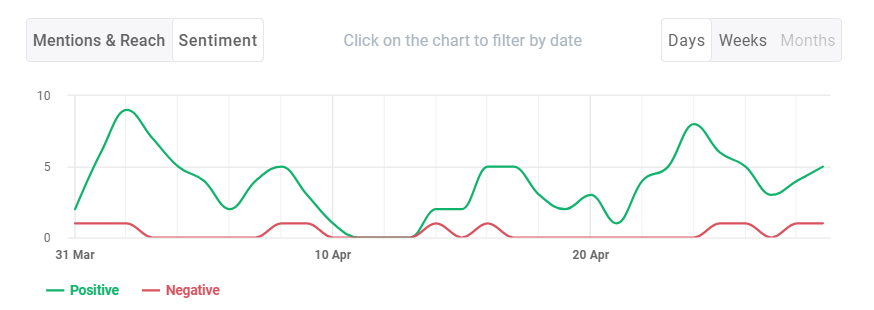
And also as a list. So, you can go directly to the source and respond to a negative opinion about your podcast.

Track sentiment with Brand24!
05 Followers
The number of followers is another audience metric. Followers are also called subscribers on some podcast platforms like Google Podcasts.
Just FYI, after June 23, 2024, Google Podcasts will no longer exist. The content published there will be available on YouTube Music.
This metric tells how many podcast listeners clicked the “follow” or “subscribe” button.

Your followers get notifications about new episodes, and your podcast is visible in their library.
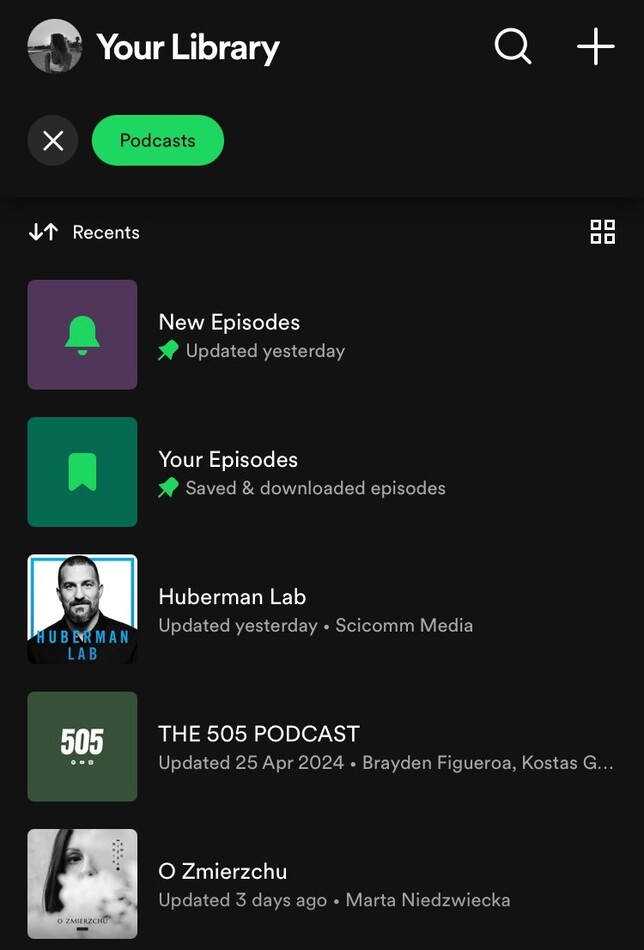
It might seem that the number of followers does not matter. Well, nothing could be further from the truth.
Followers are more active towards the podcasts they follow than those they don’t. In other words, they listen to all podcast episodes, not just single ones, or come back to listen to a particular episode once again.
Losing followers can be a sign that the content is becoming less entertaining.
Every follower is at a premium because they are loyal, and reaching them is easier.
How to measure?
The only way to measure the number of followers is to use the tool for creators provided by the platform on which your podcast is released.
06 Non-social & social media reach
You must observe these two metrics as a podcaster or a marketer interested in podcast product placement.
Non-social reach is an estimated number of people who could have seen the mentions of a podcast on the Internet, excluding social media.
On the other hand, social media reach is an estimated number of people that could have contact with social media posts containing information about the podcast.
How to measure?
Both types of podcast’s reach are measured by social listening tools such as Brand24.
Let’s look at the Huberman Lab podcast to give you an idea.
Only during the 30 days, it achieved a social media reach of 11,949,349 and a non-social reach of 2,793,282.

In comparison, Science Friday (the competing podcast) gained 137,687 social media reach and 1,410,736 non-social reach.

Measure podcast performance with Brand24!
07 Ratings and reviews
Podcast ratings refer to how listeners have rated podcasts on podcast platforms.
Why are ratings so important?
First of all, it affects the podcast’s visibility on the platforms. The higher the ratings, the higher the search display position.
Besides, a podcast with good ratings encourages to listen to it.
If you had to choose between a podcast with an average rating of 2.5/5 and 4.8/5, which would you choose?
I’m willing to bet on the one with the higher rating.
However, the podcasts’ success is not measured by numbers only. Audience feedback also counts.
Negative and positive reviews are valuable for everyone, not just creators. People interested in listening to a given podcast check reviews to see whether it is something actually for them.
How to measure?
Podcast ratings are usually expressed in numbers or starts (often ranging from 1 to 5).

Ratings and reviews can be given on the podcast platforms. They are available to everyone, both creators and listeners.
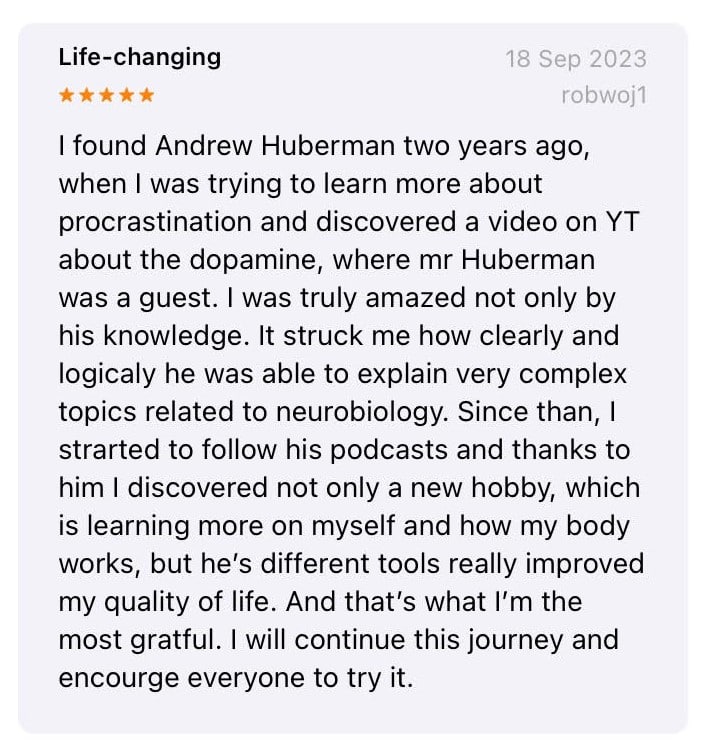
However, people are not limited to only giving feedback in places specifically designed for it.
You should support yourself with Brand24 – it catches reviews posted in different places.

08 Audience demographics
This key metric is answers to questions such as:
- Who are the listeners?
- How old are they?
- Where do they live?
- What are their listening behaviors?
- What device do they use to listen to podcasts?
Analyzing podcast demographics will show you the identity of your listeners. You will understand them better and be able to tailor your podcast content even more.
It will increase the probability of your podcast’s success incredibly.
You can adjust your podcast marketing strategy thanks to your audience data.
How to measure?
Audience analytics is presented in a creator dashboard of podcast platforms.
If you need advanced analytics for multiple podcasts, use additional tools such as Megaphone by Spotify.
It provides publisher and show-level data on listeners based on advanced demographic traits.
Monitor your podcast success!
09 Downloads
Downloads indicate how many downloads to the device an episode has.
The platforms offer to download episodes so people can listen to podcasts offline without Internet access.
This podcast metric shows how devoted and engaged the listeners are. Those who download podcasts want the option to listen to them in any situation at any time.
Remember that downloading an episode is not the same as listening to it.
How to measure?
Measuring the number of podcast episode downloads is performed by podcast-hosting platforms, just as with some other metrics.
Tip: Advanced tools can analyze metrics for you
As you realize, performance metrics can be tracked using various tools available on the major podcast platforms. The most popular are Spotify for Podcasters and Apple Podcasts for Creators.
There are also advanced tools to analyze key metrics and measure podcast success that are not tracked by any of the tools mentioned above. These metrics are:
- The volume of mentions, including social media mentions
- Sentiment
- Non-social & social media reach
- Ratings and reviews from all online sources
With help comes Brand24!
It not only analyzes the data but also provides valuable insights.
Why is it important?
Because you don’t have to puzzle over provided data – you don’t waste your time!
How successful is your podcast? Check it out now!
Brand24 has Metrics Analysis – an AI-powered feature that analyzes key metrics and gives you actionable insights.
It contains a brief description of all metrics. Take a look at Huberman Lab’s summary:

What’s more, Brand24 automatically categorizes sentiment based on sources. It shows which source generates the most negative mentions.
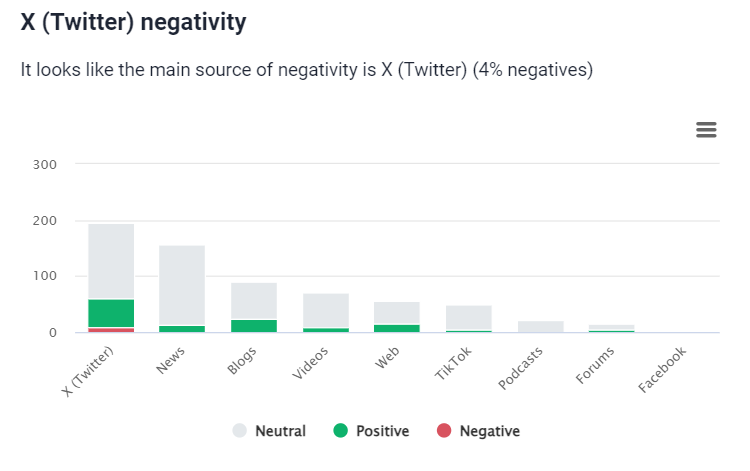
It also detects emotions: admiration, disgust, joy, fear, sadness and anger. This tool is like emotion detection software!
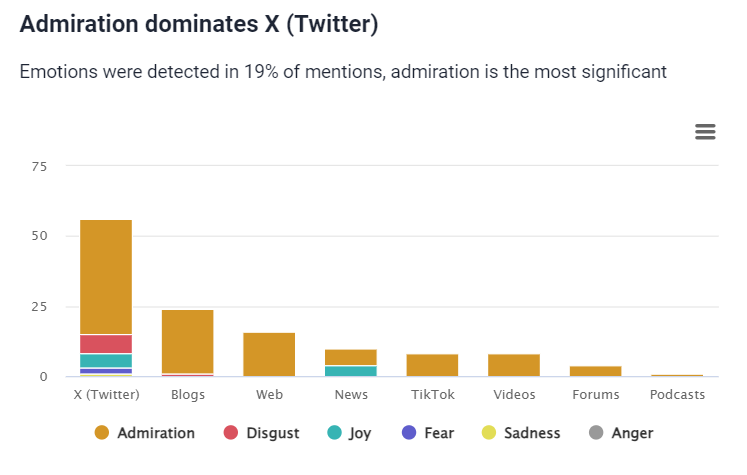
Metrics Analysis also provides reach efficiency. It’s the average reach generated by one mention in every source.
As you can see in the example of Huberman Lab, the average reach of one mention in videos is more than 89,000 (!).
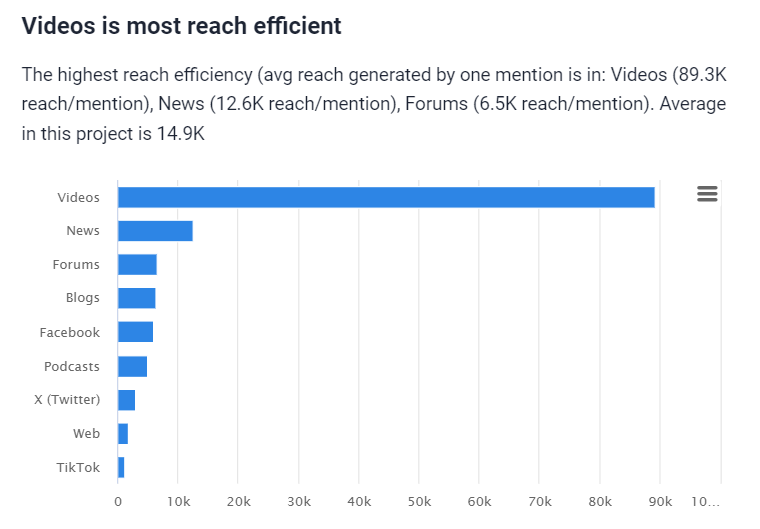
Get powerful podcast insights!
Conclusion
No matter what platform you publish podcasts on, you must monitor the right metrics to measure podcast success.
Manual tracking is impossible. You have to use tools that will do it automatically.
Choose a tool that makes podcast monitoring as easy as possible and offers valuable insights.
Key takeaways:
- Podcasting is a big industry. It doesn’t matter if you’re an individual or a brand; tracking metrics is necessary to grow your podcast.
- Both quantitative and qualitative metrics (like audience reviews) are meaningful.
- Some podcast metrics are available in the tools provided by podcast hosting platforms.
- For more advanced metrics, such as the number of mentions and their sentiment, you need to use external podcast analytics solutions like Brand24.
Are you ready to start monitoring your podcast metrics? Start with a Brand24 14-day free trial.
Related articles


![Guide to Real-Time & AI-Powered Media Monitoring [2025]](https://brand24.com/blog/app/uploads/2020/04/Media-monitoring.png)
